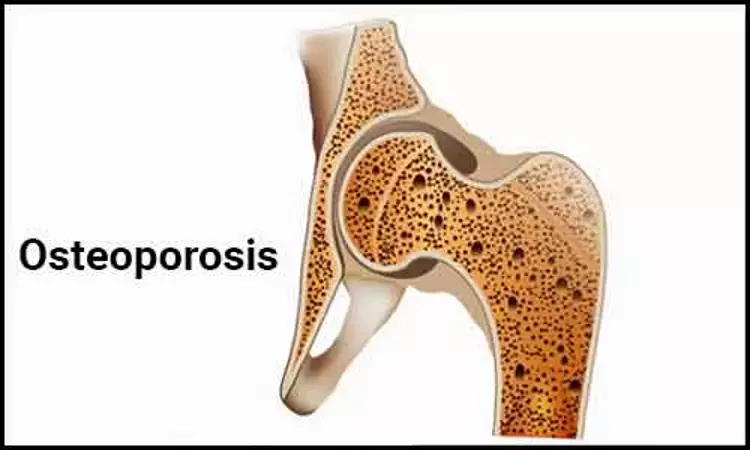- Home
- Medical news & Guidelines
- Anesthesiology
- Cardiology and CTVS
- Critical Care
- Dentistry
- Dermatology
- Diabetes and Endocrinology
- ENT
- Gastroenterology
- Medicine
- Nephrology
- Neurology
- Obstretics-Gynaecology
- Oncology
- Ophthalmology
- Orthopaedics
- Pediatrics-Neonatology
- Psychiatry
- Pulmonology
- Radiology
- Surgery
- Urology
- Laboratory Medicine
- Diet
- Nursing
- Paramedical
- Physiotherapy
- Health news
- Fact Check
- Bone Health Fact Check
- Brain Health Fact Check
- Cancer Related Fact Check
- Child Care Fact Check
- Dental and oral health fact check
- Diabetes and metabolic health fact check
- Diet and Nutrition Fact Check
- Eye and ENT Care Fact Check
- Fitness fact check
- Gut health fact check
- Heart health fact check
- Kidney health fact check
- Medical education fact check
- Men's health fact check
- Respiratory fact check
- Skin and hair care fact check
- Vaccine and Immunization fact check
- Women's health fact check
- AYUSH
- State News
- Andaman and Nicobar Islands
- Andhra Pradesh
- Arunachal Pradesh
- Assam
- Bihar
- Chandigarh
- Chattisgarh
- Dadra and Nagar Haveli
- Daman and Diu
- Delhi
- Goa
- Gujarat
- Haryana
- Himachal Pradesh
- Jammu & Kashmir
- Jharkhand
- Karnataka
- Kerala
- Ladakh
- Lakshadweep
- Madhya Pradesh
- Maharashtra
- Manipur
- Meghalaya
- Mizoram
- Nagaland
- Odisha
- Puducherry
- Punjab
- Rajasthan
- Sikkim
- Tamil Nadu
- Telangana
- Tripura
- Uttar Pradesh
- Uttrakhand
- West Bengal
- Medical Education
- Industry
Osteoporosis detection by a simple physical function test

Osteoporosis is a condition that does not exhibit symptoms until there is a bone fracture, so it is said that there is a high percentage of people who remain unaware of their condition. When people are unaware their bones have weakened, the condition is left untreated, and the recent rise of the elderly population has caused an increase in bone fractures. This has a large societal impact, such as overwhelming medical costs and long-term care. Simple screenings at resident health exams are one way for an increase in osteoporosis detecting without having to go to the hospital. When suspected osteoporosis and osteopenia is properly detected and patients are encouraged to get further evaluation at the hospital, it can receive appropriate treatment. This study developed a novel method to detect untreated osteoporosis through a low-cost, physical function test during a routine health checkup.
Osteoporosis is under-diagnosed and when left untreated, it can lead to serious fractures that can reduce mobility, living function, and is directly linked to life expectancy. With proper treatment, people are more likely to avoid serious fractures. Doctors and physical therapists at Shinshu University Hospital developed a method to detect possible osteoporosis before going to the hospital. If this detection determines that a patient is likely to have osteoporosis, patients will then be encouraged to have a bone-density test at the hospital.
This study was conducted by a random sampling of the Resident Register. Results are expected to be closer to the actual demographic of the general population than surveys targeting hospital patients and specific volunteers. The osteoporosis detection method used the combination of BMI and a two-step test which is performed by taking two maximum-stride steps and calculating the distance in centimeters divided by the body height in centimeters. This showed a high osteoporosis detection capability that even FOSTA could not achieve, despite the cost of the test being close to zero. The study which targeted postmenopausal women who are at high risk for primary osteoporosis found that if any of the following is true, TST <= 1.30 and BMI <= 23.4, TST <= 1.32 and BMI <= 22.4, TST <= 1.34 and BMI <= 21.6, or TST < 1.24 and any BMI, you are more than five times more likely to have osteoporosis than someone who is not. (Abbreviation: TST, two-step test; BMI, body mass index.)
The epidemiological survey "Obuse Study" is a large cohort study, and the second screening will continue. The ultimate goal, says the corresponding author, Dr. Shota Ikegami is "to present a new model for realizing a healthy society in a super-aged society while conducting a comprehensive health evaluation, not limited to osteoporosis, centered on locomotor examinations and sharing this finding with the world."
https://www.mdpi.com/2077-0383/10/9/1896
Hina Zahid Joined Medical Dialogue in 2017 with a passion to work as a Reporter. She coordinates with various national and international journals and association and covers all the stories related to Medical guidelines, Medical Journals, rare medical surgeries as well as all the updates in the medical field. Email: editorial@medicaldialogues.in. Contact no. 011-43720751
Dr Kamal Kant Kohli-MBBS, DTCD- a chest specialist with more than 30 years of practice and a flair for writing clinical articles, Dr Kamal Kant Kohli joined Medical Dialogues as a Chief Editor of Medical News. Besides writing articles, as an editor, he proofreads and verifies all the medical content published on Medical Dialogues including those coming from journals, studies,medical conferences,guidelines etc. Email: drkohli@medicaldialogues.in. Contact no. 011-43720751


